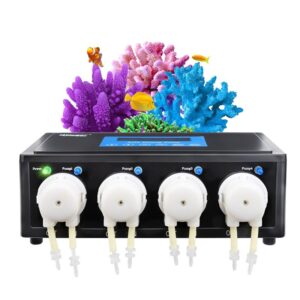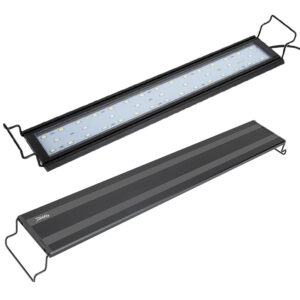Aquarium safety is an important parameter that is often overlooked, especially the aquarium’s electrical safety. The reason behind this is the excitement of the new setup. It sometimes takes a month or more for proper research and collection of proper accessories for the aquarium. It should be overlooked because it’s easy to perform safety precautions before setting up the tank and later on it becomes a headache.
Content Table

Basic Aquarium Safety
Certain basic aquarium safety tips should be kept in mind. They will ensure the longevity of your setup.
- Leak Prevention
Careful inspection regarding leaking before filling the water is important. In other cases, it’ll be a headache to remove all the setup from the tank and make it ready to go. Generally, double-check the joints and support in case of any bit of issues.
- Balanced Surface
Make sure the place where you are placing the tank should be level. It will help to keep all the aquarium supplies in the right place along with equal pressure distribution across all sides of the aquarium.
- Secure Aquarium
Secure your tank to avoid any catastrophe. The place where you are placing it should also be secure and have enough room to hold the tank with margin.
- Water Quality
Keep on checking the water quality parameters. For this, set a periodic and proper setup.
- Be Calculated
While filling the water tank, you must keep in mind the volume of the tank and the volume required by each pet, plant, and decoration. Overcrowding will cause noise in the tank.
- Quarantine Tank
Don’t introduce pets directly in your main tank, but set up a quarantine tank for sick pets as well as new pets.
- Be Cautious in Chemical
Keep a frequent check on the chemical level in the tank. Moreover, carefully use the medication.
- Out of kids’ range
Kids and other pets can prove a red flag for the tank. So, keep your tank away from their range.
- Lighting
Secure the fish tank light appropriately as well as choose it according to the pets and tank capacity.
- Backup
The next basic aquarium safety tip is to have a proper backup in case of failure of any instrument or power failure. Otherwise, it’ll damage aquarium life.
Aquarium Electrical Safety
Electricity brings a lot of ease into our lives. A lot of electrical gadgets are part of every aquarium setup, i.e., lights, aquarium heater, and filtration system. Therefore, it’s necessary to not overlook the electric safety of an aquarium. Here are some of the precautions that will make your home aquarium safer for you as well as for aquatic pets.
Home Power Setting
Make sure that your home wiring can bear the aquarium’s electric voltage. Don’t overload the outlets, you can use different kinds of circuit breakers and GFCI outlets.
Aquarium Outlet Requirements
It’s an important aquarium electric safety aspect. Here’s how you achieve the outlet requirement.
- Dedicated circuit
Use circuits that are completely dedicated to your aquarium and not shared with any other things.
- Number of outlets
Make sure that your board has enough sockets to accommodate all the different kinds of equipment, such as heaters, lights, water pumps, air pumps, skimmers, etc.
- Volt meter
Attach a single digital voltmeter to your aquarium, so that you keep an eye on the amperage and voltage delivered to the aquarium.
- Circuit breakers
Attach a circuit breaker with the aquarium so that in case of any emergency, the circuit can automatically shut down in time to protect the tank.
Drip Loops on Lines
The usage of drip loops on electric lines in aquariums is another aquarium electrical safety aspect that should not be overlooked. It is used when there’s a chance of contacting the water with sockets. The loops on electric cords are made and water spills from the wire before it reaches the socket and prevents the tank from any kind of catastrophe. Many hygger aquarium equipment come with drip loops to promote electricity safety.
Daily Inspection
Set a daily inspection time for your aquarium and check it with all aspects. The easy way to handle this headache is to make a checklist and ensure each box tick every time.
The Use of Extension Cords
Usage of extension cords is another aquarium electric safety feature. It houses all the different wires near the aquarium and one main wire joins the main socket. It saves cost and is easy to keep in control of the whole electric system of the aquarium. Pay attention to the whole voltage of the main socket to ensure the safe usage of all the extension cords.
Adapter Selection
Select an appropriate adopter for your aquarium. It includes several things for a proper adapter for your tank.
- Compatible with the system
- Proper waterproofing
- Check the safety certification
- Durable construction
- Ease in installation

Take Care of Electrical Outlets for Home Aquariums
Taking care of electrical outlets for your home aquarium is very important. Here in this section, you will learn some tips about it.
GFCI Outlet
A Ground Fault Circuit Interrupter (GFCI) is a power-controlling device. It helps to sustain the circuit, till the time when input and output are balanced. Whenever they are out of balance, the circuit automatically shuts down the system. GFCI is used where there’s a chance of meeting water with electricity. So use them to ensure aquarium safety is without doubt.
Required Equipment
The next thing is to assess how much electric power is required for your entire aquarium. You can get by assessing the number of equipment in the aquarium. Generally, it includes a pump, lights, filters, etc.
Dedicated Outlets
Use the dedicated outlets for all the aquarium equipment. It’ll help you reduce the power load on a single outlet, which ultimately enhances electric safety.
Install Timer
Use the timer in your aquarium setup. You can use it to automate the lighting system. You can also use it in the thermostat controller to maintain a proper temperature in your tank. It also helps to save electricity and enhance the aquarium’s electric safety level.
Extension Cords
Use the extension cords to group different instruments in an aquarium, i.e., filter and pump.
But keep in mind that always use extension cords that exactly match the power required by the tank’s accessories.
Backup Supply
There are certain accessories in any aquarium that continually require a power supply. In case of power failure, there is a chance of mortality of aqua pets among other things. Therefore, you should keep a backup for your aquarium. You can use a UPS or some other well-suited energy source for it, and this will help you to continuously operate the aquarium electric.
Proper Labeling
It may sound weird, but super helpful for others to manage your tank properly in your absence. The thing is that you have to label all the cords properly, and it is also able to keep the wires in order and improve the appearance of the fish tank.
Conclusion
Follow these basic and electric safety tips to see happy moves in your tank, without the fear of any catastrophe. Finally, thanks for your time, and I hope you have a safe tank in the aquarium journey.


Leave a comment